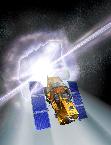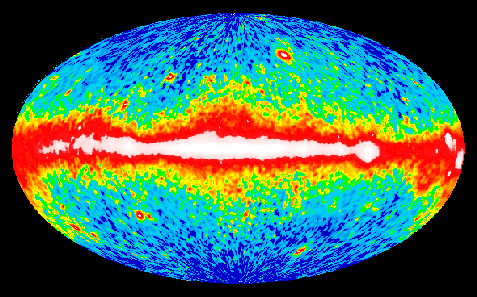astrophysics
group
|
|
Swift
Astrophysics Group
Mullard Space Science Laboratory
|
Swift was launched 20 November 2004. MSSL is the lead UK institute for the Ultraviolet and Optical Telescope (UVOT), one of the Swift narrow-field instruments. UVOT was designed and built at MSSL. It was largely based on the design of its sister instrument, the XMM-OM onboard the ESA XMM mission, but has more advanced control electronics, and a higher throughput in the ultraviolet. UVOT contains several filters and grisms that can be used to study a GRB afterglow's optical, ultraviolet and spectral properties in the 170 - 650nm waveband. At times that Swift is not observing GRBs, many other astronomical observations are scheduled at lower priority. The rapid response to gamma ray pulses does sometimes lead to observations of different types of transient object to GRBs. MSSL is responsible for the UVOT calibration and some aspects of its operation. Please visit the link below for more information about this instrument:
The other two instruments on board Swift are the Burst Alert Telescope (BAT) and the X-Ray Telescope (XRT). The BAT monitors Gamma-ray events in the 15 - 150keV energy band over a wide cone of the sky which is much wider than the field of view of either the UVOT or XRT telescopes; whereas the XRT contains several nested mirrors that focus X-rays from a GRB afterglow in the 0.3 - 10keV energy band. When a GRB is detected, the BAT passes the GRB's coordinates to Swift's navigation system, and the satellite slews around so that the XRT and UVOT can observe the GRB in the optical, UV, and X-ray regions of the spectrum.
Scientists and engineers from MSSL, the United States and Italy have performed pre-launch calibration and tests on the Swift instruments prior to its readiness for launch in October 2004. A Delta 7320 rocket will deliver the satellite to a low Earth orbit on November 8th 2004 (scheduled launch date). MSSL scientists and engineers will continue to be involved in UVOT after launch, as instrument and calibration specialists, as well as in the creation of a UVOT catalogue. In addition, MSSL scientists will be analysing data from all the instruments on Swift, advancing the understanding of these events. | |||
|
For more information about the mission, its instrumentation and its scientific objectives, please visit the links below. | |||
mssl links
Main MSSL Swift UVOT pages
|
uk links
leicester
|
nasa links
swift mission
|
 The Swift observatory is a NASA medium explorer spacecraft dedicated
to the rapid capture of Gamma-Ray Burst (GRB) and afterglow data in multiple
wavebands. In addition to observing up to a thousand GRBs, this space mission
has five primary objectives: to determine the origin of GRBs, to classify
observed bursts into existing and new GRB types, to apply GRB data to early
universe theories, to examine the evolution of GRB blast waves, and to survey
the X-ray sky. The Swift observatory will carry three instruments designed for
observations in specific wavelengths.
The Swift observatory is a NASA medium explorer spacecraft dedicated
to the rapid capture of Gamma-Ray Burst (GRB) and afterglow data in multiple
wavebands. In addition to observing up to a thousand GRBs, this space mission
has five primary objectives: to determine the origin of GRBs, to classify
observed bursts into existing and new GRB types, to apply GRB data to early
universe theories, to examine the evolution of GRB blast waves, and to survey
the X-ray sky. The Swift observatory will carry three instruments designed for
observations in specific wavelengths.

 The composite image to the right shows the all sky gamma ray background.
While the optical component of GRBs is usually very faint in comparison to other
objects and events visible to satellites in Earth orbit, the Gamma and X-ray
components are rapid and intense.
The composite image to the right shows the all sky gamma ray background.
While the optical component of GRBs is usually very faint in comparison to other
objects and events visible to satellites in Earth orbit, the Gamma and X-ray
components are rapid and intense.